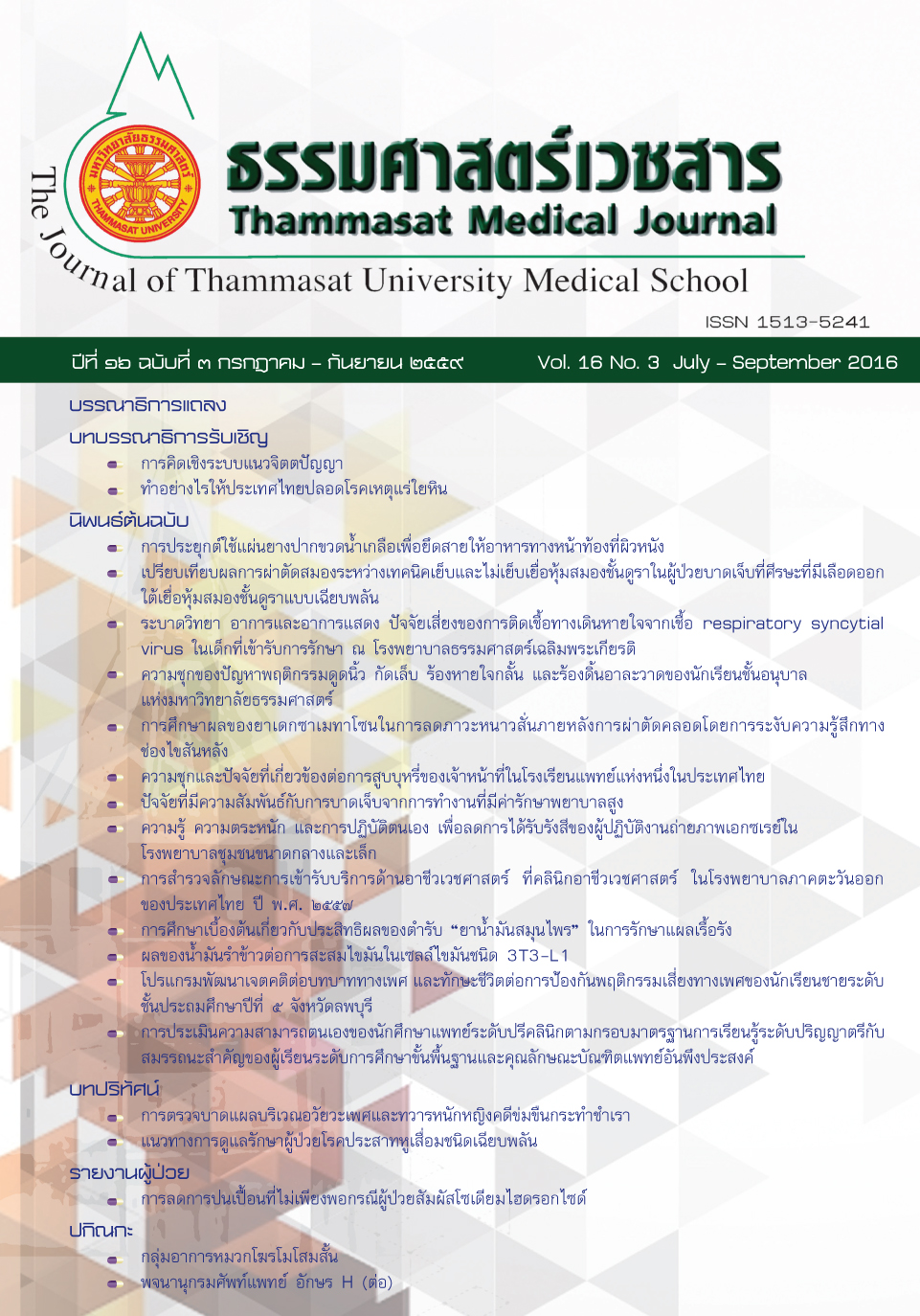The effect of dexametasone in decrease postoperative shivering after caesarean delivery under spinal anesthesia: A randomized, double-blinded, placebo-controlled study
Keywords:
Postoperative shivering, Dexamethasone, Spinal anesthesia, Pregnant woman with caesarean deliveryAbstract
Introduction: Shivering during neuraxial anesthesia is very common due to impair centrally mediated peripheral vasoconstriction and shivering thresholds and allows greater environmental heat loss. Dexamethasone can decrease gradient between core and skin temperature by inhibiting release of vasoconstrictors and pyrogenic cytokines. So we hypothesized that intravenous dexamethasone can decrease postoperative shivering during neuraxial anesthesia.
Method: A randomized, double-blinded, controlled trial 46 patients scheduled for elective caesarean section with spinal anesthesia were separated into two groups. In the first group, dexamethasone 0.1 mg/kg were injected intravenous before spinal anesthesia and normal saline were injected in the control group. The incidence and intensity of shivering were also recorded at Postanesthesia care unit (PACU).
Result: There were no significant differences between age, weight, height, duration of operation, total IV fluid, total blood loss, skin and core temperature in two groups. Four cases (17.4%) of dexamethasone group and three cases (13.04%) in normal saline had postoperative shivering. Therefore dexamethasone and normal saline were not significantly different in decrease the incidence of postoperative shivering. (p-value = 0.681)
Discussion and Conclusion: Dexamethasone (0.1 mg/kg) could not decrease the incidence of postoperative shivering.
บทนำ: การระงับความรู้สึกทางช่องไขสันหลังมีผลทำให้เกิดภาวะหลอดเลือดขยายตัว ยา dexamethasone มีคุณสมบัติ ช่วยลดความแตกต่างระหว่างอุณหภูมิผิวและอุณหภูมิแกนกลาง ผ่านกลไกต้านกระบวนการอักเสบและยับยั้งการหลั่งสารที่ทำให้หลอดเลือดหดตัว งานวิจัยจึงต้องการศึกษาการลดภาวะหนาวสั่นหลังให้ยาเดกซาเมทาโซน
วิธีการศึกษา: กลุ่มตัวอย่างเป็นหญิงตั้งครรภ์ที่เข้ารับการผ่าตัดคลอดในโรงพยาบาลธรรมศาสตร์เฉลิมพระเกียรติ จำนวน ๔๖ ราย โดยทำการแบ่งอย่างสุ่มเป็นกลุ่มที่ได้รับยาเดกซาเมทาโซน ขนาด ๐.๑ มิลลิกรัมต่อกิโลกรัม และกลุ่มที่ได้รับ normal saline เป็นกลุ่มควบคุม โดยวัดผลการเกิดภาวะหนาวสั่นภายหลังการผ่าตัดที่ห้องพักฟื้น
ผลการศึกษา: ข้อมูลพื้นฐานของทั้ง ๒ กลุ่ม ได้แก่ อายุ น้ำหนัก ส่วนสูง เวลาในการผ่าตัด ปริมาณสารน้ำที่ใช้ ปริมาณเลือดที่เสียขณะผ่าตัด อุณหภูมิผิวและแกนกลางก่อนและหลังผ่าตัด ไม่มีความแตกต่างกันอย่างมีนัยสำคัญพบว่ากลุ่มที่ได้ยาเดกซาเมทาโซน เกิดภาวะหนาวสั่น ๔ ราย (ร้อยละ ๑๗.๔) และกลุ่มควบคุมเกิดภาวะหนาวสั่น ๓ ราย (ร้อยละ ๑๓.๐๔) พบว่าการเกิดภาวะหนาวสั่นของทั้ง ๒ กลุ่ม ไม่มีความแตกต่างกันอย่างมีนัยสำคัญ (p-value = ๐.๖๘๑)
วิจารณ์ และสรุปผลการศึกษา: การให้ยาเดกซาเมทาโซน ๐.๑ มิลลิกรัมต่อกิโลกรัม ก่อนได้รับการระงับความรู้สึกทางช่องไขสันหลังสำหรับการผ่าคลอด ไม่พบความแตกต่างทางสถิติของอุบัติการณ์การหนาวสั่นหลังการผ่าตัดเมื่อเทียบกับไม่ให้ยา



